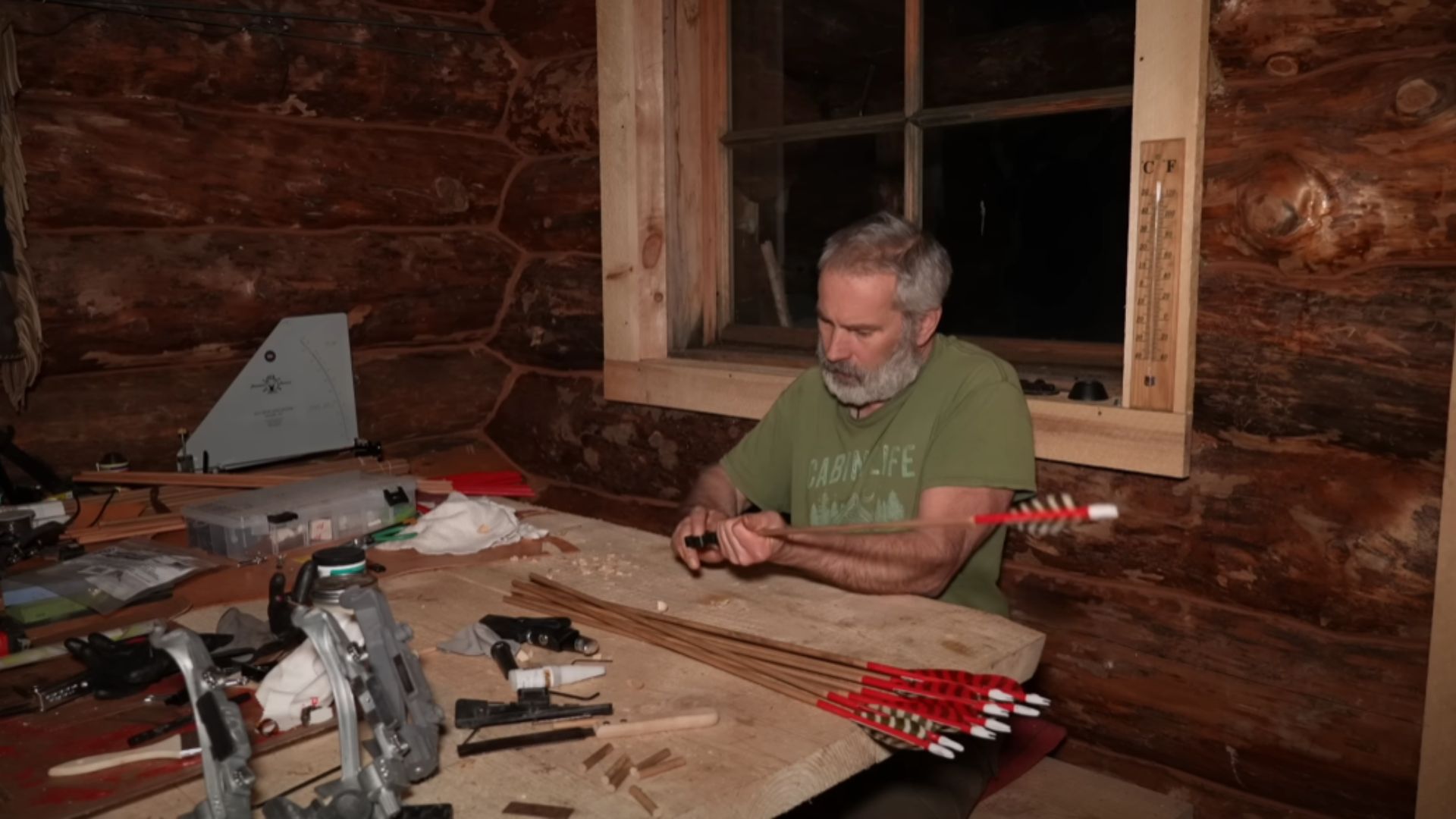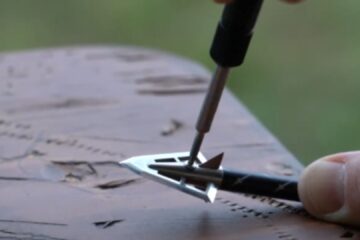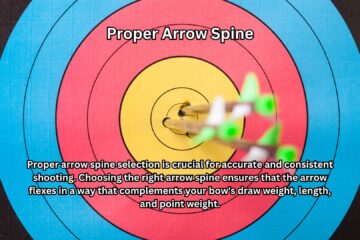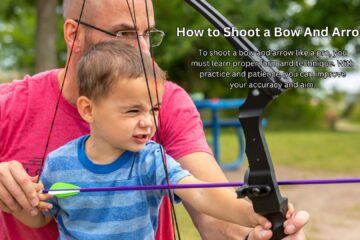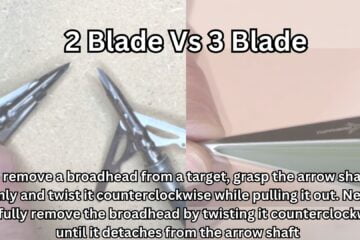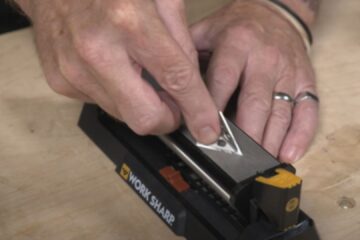To make wooden arrows, select suitable wood for the shaft and feathers for the fletches, shape and cut the wood to desired length, attach the nock, glue the fletches, and finish the arrow with paint or varnish. Wooden arrows are a popular choice for archery enthusiasts due to their traditional appeal and customizable features.
Crafting your own wooden arrows can be a rewarding and satisfying experience. In this guide, we will walk you through the step-by-step process of making your own wooden arrows. From choosing the right wood for the shaft to attaching the fletches and finishing touches, we’ll cover everything you need to know to create high-quality and reliable wooden arrows.
So grab your tools and let’s get started on this woodworking adventure.
Wooden Arrow History: Tracing The Origins Of Traditional Archery
Tracing the long and storied history of wooden arrows is the key to understanding the origins of traditional archery. From ancient civilizations to modern enthusiasts, the craft of making wooden arrows has remained an integral part of this timeless sport.
Archery has a rich and ancient history, with evidence of its practice dating back thousands of years. The roots of archery and the use of wooden arrows can be traced back to various cultures around the world. In this section, we will explore the origins of archery, the cultural significance of wooden arrows in traditional archery, and the advantages and disadvantages of using wooden arrows.
Origins Of Archery And The Use Of Wooden Arrows:
- Archery is believed to have originated in the late Paleolithic or early Mesolithic periods, around 10,000 to 20,000 years ago.
- Different ancient civilizations, such as the Egyptians, Indians, Greeks, Romans, and Chinese, developed their unique styles and techniques in archery.
- Wooden arrows were the primary choice for archers due to the availability of wood, its flexibility, and its ability to be shaped into suitable arrow shafts.
- These arrows were meticulously crafted from various types of wood, including yew, cedar, birch, and bamboo, depending on the region and the archer’s preferences.
- The design and construction of wooden arrows evolved over time, with improvements in arrowheads, fletching materials, and manufacturing methods.
Cultural Significance Of Wooden Arrows In Traditional Archery:
- Wooden arrows have held significant cultural and historical value in traditional archery practices worldwide.
- In many cultures, archery played a crucial role in hunting, warfare, and even religious rituals.
- Wooden arrows symbolize a connection to nature and the essential skills required for survival.
- The craftsmanship involved in making wooden arrows often represents cultural heritage and passed-down knowledge from generation to generation.
- Today, traditional archery enthusiasts and practitioners appreciate wooden arrows not only for their historical significance but also for the sense of tradition and craftsmanship they embody.
Advantages And Disadvantages Of Using Wooden Arrows In Archery:
Advantages:
- Natural Flexibility: Wooden arrows possess a natural flexibility that can enhance accuracy and help absorb energy upon release.
- Customizability: Wooden arrows can be easily customized in terms of length, weight, and spine match to suit individual archer preferences.
- Affordability: Wooden arrows are often more cost-effective compared to modern materials such as carbon or aluminum.
Disadvantages:
- Durability: Wooden arrows may be more prone to damage and breakage compared to modern materials, especially in wet conditions or extreme temperatures.
- Weight Variations: Due to the natural characteristics of wood, there can be slight weight variations between wooden arrows, which may affect consistency.
- Maintenance: Wooden arrows require regular maintenance, such as waxing and inspection, to ensure optimal performance and longevity.
Wooden arrows have played a significant role in the history of archery, connecting us to ancient traditions and cultures worldwide. While modern materials have emerged in the world of archery, the cultural and historical significance, as well as the unique characteristics of wooden arrows, continue to attract archers who appreciate the craft, tradition, and connection to nature that wooden arrows offer.
Selecting The Right Wood For Arrows: Exploring The Best Options
Exploring the best options in selecting the right wood for arrows, this article delves into the process of making wooden arrows. Discover the ideal choices for crafting reliable and high-performing arrows.
Considerations When Choosing Wood For Arrows
- Density: Select wood that is dense enough to provide the necessary stiffness and strength for the arrows.
- Straightness: Look for wood that is straight and free from significant defects or warping, as these can affect the arrow’s flight.
- Flexibility: Consider the wood’s flexibility, as it should possess a balance between being rigid enough to maintain its shape and flexible enough to absorb the energy upon release.
- Weight: Keep in mind the weight of the wood, as it can influence the overall weight and balance of the arrow.
- Availability: Choose wood that is readily available in your area, as it reduces the cost and effort of sourcing the material.
Different Types Of Wood Suitable For Making Wooden Arrows
There are several types of wood that work well for making wooden arrows. Some common options include:
- Port Orford Cedar: Known for its excellent straightness and light weight, Port Orford Cedar is a popular choice among arrow makers.
- Douglas Fir: Offering good durability and straightness, Douglas Fir is another commonly used wood for arrows.
- Bamboo: Renowned for its strength and flexibility, bamboo arrows have become increasingly popular due to their high-performance characteristics.
- Sitka Spruce: Known for its light weight and consistent grain, Sitka Spruce is often chosen for traditional-style wooden arrows.
- Hickory: With its natural durability and stiffness, hickory makes for reliable and reasonably priced arrows.
Characteristics And Properties Of Popular Woods Used In Arrow Making
Port Orford Cedar:
- Straight grain and consistent density
- Light in weight, making it suitable for faster arrows
- Resilient and easy to work with, allowing for precise arrow shaping
- Strong and durable, providing good resistance to bending and breaking
- Moderately light weight, offering a balanced feel when shooting
- Natural oils that add some weather resistance to the arrows
- High tensile strength and elasticity, enhancing arrow speed and accuracy
- Lightweight yet sturdy, making it ideal for both target shooting and hunting
- Natural dampening properties that absorb shock and vibrations
- Lightweight with consistent grain structure
- Good balance between flexibility and stiffness, resulting in accurate shots
- Resistant to warping and swelling, ensuring arrow durability
- Provides high durability and resistance to bending or breaking
- Heavy and stiff, suitable for traditional longbows and heavier draw weights
- Affordable and readily available, making it a popular choice for many arrow makers
Remember, each wood type possesses unique qualities that can affect arrow performance. Consider your specific needs and preferences when selecting the wood for your arrows.
Crafting Wooden Arrows: Step-By-Step Guide To Mastering The Art
Master the art of making wooden arrows with this step-by-step guide, perfect for crafting enthusiasts and archery lovers. Discover the techniques and skills needed to create high-quality arrows that will enhance your archery experience.
Wooden arrows have a rich history and continue to be favored by archery enthusiasts for their traditional appeal and craftsmanship. Crafting wooden arrows is a complex process that requires attention to detail and patience. In this step-by-step guide, we will walk you through the process of creating your own wooden arrows, from preparing the shaft to attaching the fletching and installing points and nocks.
So, let’s dive right in!
Tools And Materials Needed For Crafting Wooden Arrows:
To get started with making wooden arrows, here are the tools and materials you’ll need:
- Wood shafts: Selecting the right wood is crucial. Spine, weight, and straightness are important factors to consider.
- Saw: A fine-toothed saw will help you cut the wooden shafts to the desired length.
- Rasp or file: For tapering the wooden shafts, a rasp or file will come in handy.
- Feather fletching: Choose feathers that are sturdy and suitable for your arrows. Hen feathers are commonly used.
- Fletching jig: This tool helps align and attach the feathers accurately to the shafts.
- Arrow points: There are various types available, such as field points, broadheads, and bullet points.
- Nocks: Consider using self-nocks or snap-on nocks, which can be attached to the ends of the arrows.
- Sandpaper: Essential for smoothing the wooden shafts before finishing.
- Stain or varnish: To protect and enhance the appearance of your wooden arrows.
Preparing The Shaft: Straightening, Cutting, And Tapering:
Before moving on to the other steps, you need to prepare the wooden shafts. Here’s how you do it:
- Straightening the shaft: Inspect your wooden shafts and gently bend them in the opposite direction of any visible curvature to straighten them.
- Cutting the shaft: Measure and mark the desired length of the arrow shafts, then use a saw to cut them carefully.
- Tapering the shaft: Using a rasp or file, taper one end of each shaft to create a gradual point. This tapering allows for easier penetration and aerodynamic flight.
Fletching The Arrows: Choosing Feathers, Aligning, And Attaching:
Fletching adds stability and control to your arrows during flight. Follow these steps for successful fletching:
- Choosing feathers: Opt for sturdy hen feathers, and consider using feathers from the same wing to ensure consistent performance.
- Aligning the feathers: Use a fletching jig to align the feathers with precision. This ensures that they are positioned symmetrically on the arrow shaft.
- Attaching the feathers: Apply a small amount of glue to the base of each feather and carefully attach them to the shaft, following the alignment set by the fletching jig.
Installing Points And Nocks: Different Types And Methods:
The points and nocks you choose can vary based on your shooting style and purpose. Here’s what you need to know:
- Point types: Select a point suitable for your needs, whether it’s for target shooting, hunting, or other purposes. Field points are commonly used for practice.
- Nock types: Consider using self-nocks or snap-on nocks, which can be easily attached to the shafts.
- Installing the points and nocks: Apply adhesive to the points and nocks, then insert them securely into the tapered and nocked ends of the wooden shafts.
Finishing Touches: Sanding, Staining, And Varnishing The Arrows:
To enhance both the performance and aesthetics of your wooden arrows, complete the following steps:
- Sanding the arrows: Use sandpaper to smooth the shafts, removing any rough edges and imperfections.
- Staining the arrows: Apply a wood stain of your choice to add color and protect the wooden shafts from moisture and wear.
- Varnishing the arrows: Once the stain has dried, apply a layer of clear varnish to provide a protective finish, ensuring longevity.
Crafting wooden arrows is both an art and a science. By following this step-by-step guide, you can master the process of creating your own high-quality wooden arrows. So, gather your tools, select the materials, and let your creativity fly!
Tuning Wooden Arrows: Achieving Accuracy And Precision
Crafting wooden arrows with precision and accuracy is essential for archery enthusiasts. This guide reveals effective techniques for tuning arrows and achieving a heightened level of performance.
Methods For Tuning Wooden Arrows: Bare Shaft Testing And Paper Tuning
There are different methods to tune wooden arrows, but two popular approaches are bare shaft testing and paper tuning.
- Bare shaft testing involves shooting arrows without fletching to gauge their flight characteristics. This test helps identify any arrow flight irregularities, such as horizontal or vertical deviation, indicating the need for adjustments in tuning.
- Paper tuning is another effective method that involves shooting arrows through a sheet of paper. By observing the tear pattern, you can determine the arrow’s flight behavior and make necessary adjustments. A clean bullet hole indicates proper tuning, while tears on one side may signal issues like a weak or stiff arrow spine.
Both these tuning methods provide valuable insights into arrow performance and help you make adjustments to achieve the desired accuracy.
Adjusting Arrow Length, Weight, And Balance For Optimal Performance
Apart from spine tuning, adjusting arrow length, weight, and balance can have a significant impact on arrow flight and performance. Here are some key considerations:
- Arrow length: Choosing the right arrow length is crucial for optimal performance. A too long or too short arrow can affect accuracy and stability. Finding the ideal length based on your draw length and shooting style is essential.
- Arrow weight: The weight of an arrow influences its trajectory and stability. It is crucial to select arrows with the appropriate weight for your bow setup and shooting preferences.
- Arrow balance: Balancing an arrow involves adjusting its center of gravity by adding or removing weight to achieve ideal flight characteristics. This fine-tuning can greatly impact arrow stability and accuracy.
By carefully adjusting arrow length, weight, and balance, you can maximize the performance and consistency of your arrows, leading to improved accuracy and precision in your archery endeavors.
Frequently Asked Questions For Making Wooden Arrows
What Wood Is Best For Making Arrows?
The best wood for making arrows is usually Port Orford Cedar or Sitka Spruce wood.
What Is The Best Material For Homemade Arrows?
The best material for homemade arrows is typically wood, such as cedar, due to its strength and durability.
Is It Worth It To Make Your Own Arrows?
Yes, making your own arrows is worth it as it allows customization and saves money.
Can Arrows Be Made Out Of Wood?
Yes, can be made from wood by shaping and carefully crafting a shaft.
Conclusion
Crafting wooden arrows is not only a fascinating hobby but also a practical skill to have. By following the steps outlined in this blog post, you can create arrows that are sturdy, accurate, and visually appealing. Remember to choose the right type of wood based on your shooting preferences and to properly straighten and fletch the arrows for optimal performance.
Don’t forget to take safety precautions throughout the process and consider seeking guidance from experienced craftsmen or online resources if you’re a beginner. Whether you’re a traditional archer or simply interested in DIY projects, making wooden arrows can be a rewarding and enjoyable endeavor.
So, pick up your tools and give it a try – who knows, you might just discover a new passion in creating your own arrows for archery adventures!

